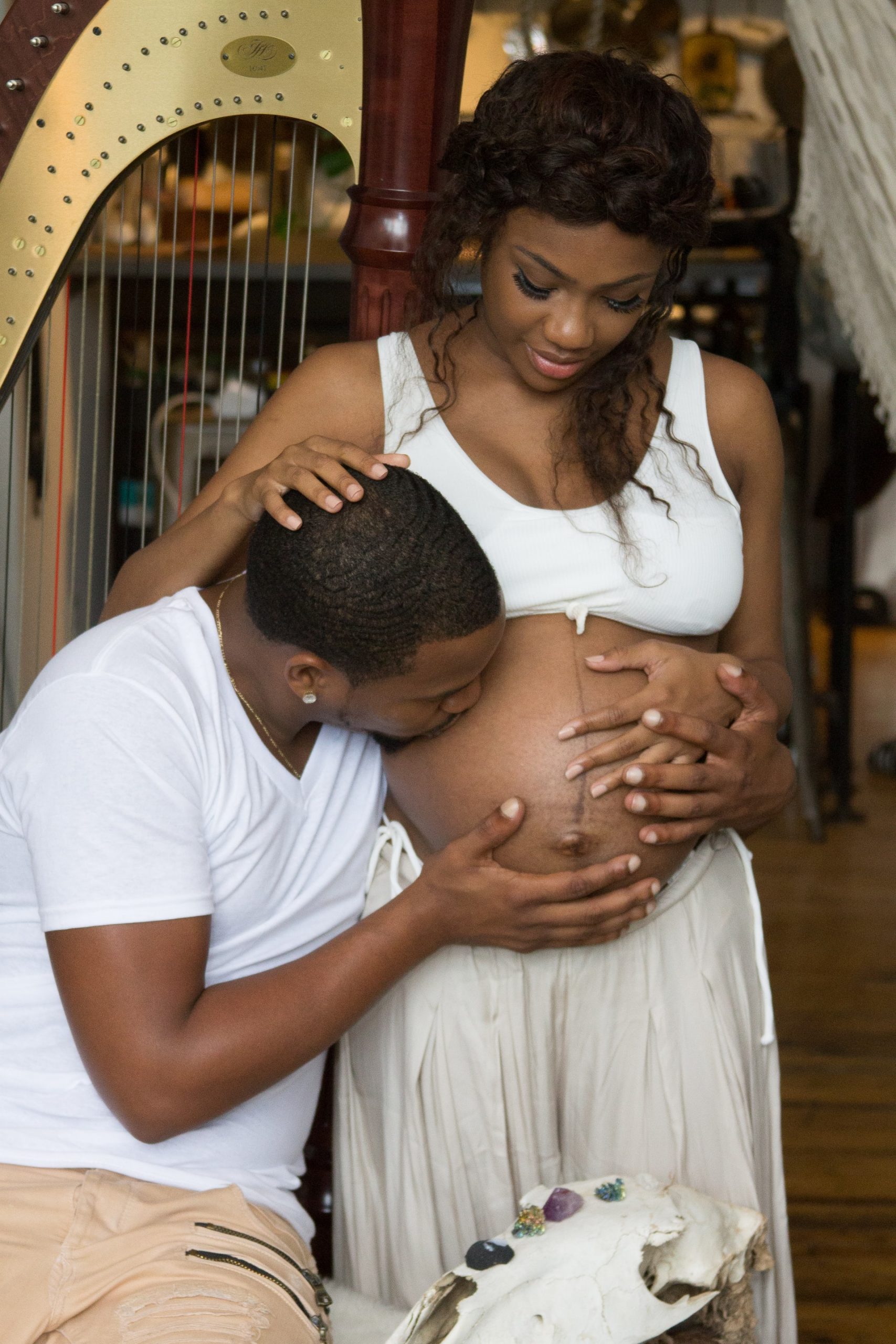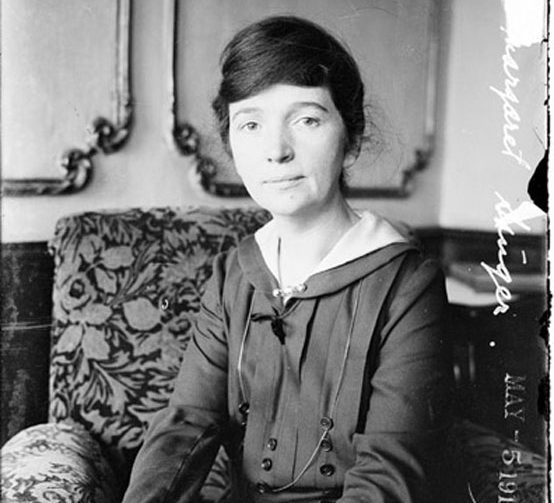Reproductive Freedoms
Jayamala Mayilsamy and Kamalaveni Veni
It is the mission of the United Nations Fund for Population Activities (UNFPA), “to deliver a world where every pregnancy is wanted, every birth is safe and every young person’s potential is fulfilled.” (2014, 10).

Reproductive freedom is essential for all women and men to have self-determination over their bodies and sexuality. Reproductive rights for women are critical for the achievement of gender equality to ensure global progress toward fair and democratic societies. For decades, the decisions and choices related to bearing and nurturing children have been debated and discussed between spouses and their families in many societies. “Marriage,” the legally or formally recognized union of two people as partners in a personal relationship, has been traditionally considered as the only right time for giving birth to a child; some religions considered out-of-wedlock births to be a sin.
Studies have shown that in many societies, early marriage, giving birth to a child, space between children, and restrictions to the number of children borne are mostly decided by the spouse and by the family members based on their psychological needs and socioeconomic conditions of the family. Beyond that, global sociopolitical movements over the years have attempted to manipulate women’s lives, sexuality, and fertility for political purposes, fundamentalist revivals, or population control.
Overview
Gender norms often create a double standard with regard to men’s and women’s sexuality; for example, unmarried women who engage in sexual activity are shamed, whereas their male peers who do the same are celebrated. Social stigma can prevent unmarried women from seeking sexual and reproductive health care, especially contraception and abortion. Conversely, in societies with more equitable gender norms, men do support women’s autonomy and rights and facilitate women’s access to information and services (Blanc 2001).
Women have responded to repressive gender norms and resurgences of gender violence by building an internationally recognized legal framework for the universal defense of women’s autonomy, bodily integrity, and personhood. The framework identifies how human rights instruments may be interpreted to condemn abuse of women’s rights. It also proposes modifications to existing legal tools and social policies. With explicit provisions protecting women’s right to bodily integrity, the framework is a key instrument for guaranteeing that population programs respect women.
This chapter gives a historical overview of population and birth control and its essentiality by examining culture-specific myths regarding national and global growth. The chapter describes the historical reproductive rights movement that has promoted a human rights-based approach to reproductive health; laws relating to reproductive rights; institutions working toward reproductive rights; the international commitment to reproductive health; contraceptives and the impact of new technologies related to reproductive health; and cases explaining how the existing patriarchal system plays a role in reproductive behavior.
Population Control and the Birth Control Movement
Humans have attempted to control their reproduction since ancient times, using techniques such as abstinence, withdrawal, and abortion. Contraceptive methods such as vaginal sponges and cervical caps were used in the Middle East several thousand years before Christ. Population control as a major international development strategy is a phenomenon that dates only to the aftermath of World War II. Yet its origins reach back to the intellectual currents and social movements of the nineteenth and twentieth centuries, which culminated in an organized birth control movement in Europe and the United States (Hartmann 1997).
Eugenicists and racists attempted to use birth control for social engineering. Eugenics is a set of beliefs and practices that aim to improve the genetic “quality” of a human population, historically by excluding people and groups judged to be inferior or promoting those judged to be superior. The motive of eugenics was to limit “deviant” populations; the population control movement aimed to solve social and economic problems through fertility control. It was used again as a tool in a new era of social planning after World War II when it metamorphosed into “family planning.” The efforts of English radical neo-Malthusians (who believed that rapid population growth would lead to depletion of the Earth’s resources) that promoted birth control and emphasized poverty reduction somehow evolved into women’s rights. Initially, the US birth control movement reflected the emergence of family planning policy resulting from the efforts of Margaret Sanger, feminists, and the civil rights movement. By the twentieth century, changing views of sexuality and working-class militancy ignited the US birth control movement.
The Women’s Health Movement
Margaret Sanger

Linda Gordon’s “Woman’s Body, Woman’s Right” and Bonnie Mass’s “Population Target” analyze the history of the birth control movement and trace the elements present in the current debate to their origins in the conflicts and contradictions of the movement’s history. They have written about the women’s health movement and noted that it positively influenced gynecological practice. They have also described problems with the first generation of oral contraceptives.
Population control moved through three stages: from the cause of “voluntary motherhood,” to advance suffrage and women’s political and social status; to the concept of “birth control,” promoted by socialist feminists to help empower women and the working class; and, from 1920 on, to a liberal movement for civil rights and population control.
Physicians such as Robert Latou Dickinson legitimized the movement via formation of the Committee on Maternal Health in 1925, but the movement remained divided until 1939, when Sanger’s group merged with the American Birth Control League, the predecessor of Planned Parenthood Federation of America. A key US legal decision in 1939 allowed for the distribution of birth control devices by mail to physicians. After a brief retirement, Sanger formed the International Planned Parenthood Federation and supported research into the birth control pill. Eugenicists through the Committee on Maternal Health supported Christopher Tietze and others developing “The Pill.” Final constitutional access to contraception based on the right to privacy was granted in Griswold v. Connecticut (1965).[1] The ruling in Eisenstadt v. Baird (1972)[2] extended this right to unmarried persons. The right to privacy was further extended in the Roe v. Wade decision on legal abortion in 1973.[3]
Barriers to Contraceptive Use
by Sophie Brodish
Across the globe, contraception use has reached a record high. Modern forms of contraception globally include, but are not limited to, female sterilization, male sterilization, pill, injectables, implants, intrauterine devices, and male condoms. Within Ethiopia, Kenya, and Tanzania the most popular contraception method are injectables, while sterilization is more common in other places, such as Guatemala.* In countries where there is a strong skew toward one or two contraception methods, however, questions about equal access arise. Data suggest that women may not have a choice when choosing contraceptive methods or are limited from the full array of existing options. Existence does not guarantee access in the world of reproductive freedom.
In countries where women with unmet needs are not using contraception despite not desiring a pregnancy, they cite concerns related to contraception side effects, postpartum amenorrhea (also known as postpartum infertility), and lack of necessity as a result of infrequent sex. But one of the most significant concerns is the lack of knowledge itself. Within the Democratic Republic of Congo, nearly 19 percent under the age of 25 and 10 percent above the age of 25 cite their reason for not using contraception as being a lack of knowledge surrounding the method and the method’s source, the main concern still being postpartum and breastfeeding effects from the use of contraception. Complications related to postpartum breastfeeding are a primary concern for many women under the age of 25, leading to a decreased use of contraception by this population, increasing their chances of an unintended pregnancy. Improving knowledge surrounding contraception will decrease the risk of not just unintended pregnancy, but also the spread of sexually transmitted infections, which can be transmitted further without proper knowledge.
*One organization that seeks to spread awareness is WINGS Guatemala (Women’s International Network for Guatemala Solutions), an organization founded to improve the education and access to reproductive and family planning services for rural Guatemalan youth, women, and men. They provide free contraceptives to those under 19 years of age and offer a wide array of methods to choose from, as well as offer counseling pertaining to sexual and reproductive health.
The argument for improving the “quality” of the population remained from the formation of the Population Reference Bureau in 1929 through the 1960s. US government support for national and international family planning proceeded slowly through the 1950s, 60s, and 70s. The US need for the resources of developing countries led to concerns about population growth fueling nationalistic fires. Thus private agencies began a postwar population control effort in developing countries. This received official US approval with the 1958 report of the Draper Committee,[4] which identified world population growth as a US security issue. From 1967 to 1970, Congress enacted strong legislation in support of national and international family planning. The Bucharest Conference in 1974 highlighted the inadequacies of international population control that deemphasized economic development.
About $5 billion is spent annually on family planning in the Third World. Third World governments spend about $3 billion, with China, India, and Indonesia being the biggest spenders. More than $1 billion is donated by the governments of developed countries, multilateral institutions, and private agencies, and the rest is spent by individual contraceptive users.
While the level of population assistance has increased over time, it still accounts for only 1 percent of Official Development Assistance (ODA). This percentage is significant, however, since less than 7 percent of ODA is allocated to human welfare concerns and population aid, and the policies it helps to generate influence many other aspects of development planning. The organizations that comprise the population establishment have the common purpose of reducing population growth in developing countries, but they are nonetheless different entities with sometimes conflicting goals and strategies.
Reproductive Rights Are Human Rights: Progress from 1945 to 1994
The Universal Declaration of Human Rights was first ratified in the United Nations Charter in 1945. The declaration affirmed equality between the sexes as a basic principle in 1948. Yet inequality remained between men and women until the international body seriously examined women’s conditions in 1975. The United Nations (UN) then sponsored meetings to launch the women’s decade in 1975. The International Women’s Year Conference in Mexico City (1975) initiated the decadelong process that culminated in Nairobi in 1985 (Correa and Reichmann 1994).
The International Women’s Year Conference denounced coercive practices in contraceptive research and services as human rights abuses. Women activists were instrumental in ensuring that the women’s conference grounded its assertion of rights to reproductive choice on a notion of bodily integrity and control. The UN Decade for Women played the role of an international legal instrument for the Convention on the Elimination of All Forms of Discrimination Against Women (CEDAW), ratified in 1979. CEDAW was a major victory in the battle to secure women’s equality with men, including the right to bodily integrity. But CEDAW failed to specify a number of women’s reproductive rights, except to affirm women’s rights to family planning information, counseling, and services, and to have equal rights with men to decide the number and spacing of their children. In addition, CEDAW confirms women’s rights to maintain their job during and after pregnancy, including maternity leave and childcare (UN Women 1979, Part I, Article 4, Appendix A).
Global Protections against Pregnancy Discrimination
by Ramona Flores
MaternityAction.org defines pregnancy discrimination as “treating a woman unfavourably because of her pregnancy or pregnancy-related illness.” Many countries have laws and regulations in place that serve to legally protect pregnant people from pregnancy-based discrimination, like New Zealand, Sweden, the United Kingdom, and the United States. However, there are still many countries with policies that fall short of being effective or exclude women who aren’t citizens, such as migrant workers.
The Fair Labor Association published a report in 2018 that highlighted the struggles of pregnant migrant workers in Malaysia, Taiwan, and Thailand. The study not only identified the problems in each country’s treatment of pregnant migrant women, but also outlined possible solutions. Some connecting themes across all three countries were a push for civil rights education for expectant mothers, improving health care access for both mothers and their children, and access to pre- and postnatal care regardless of citizenship status.
A 2021 study published in the Qualitative Report found that more than 800,000 women in Italy reported being forced to resign after becoming pregnant and had undated resignation letters used against them. Alternatively, some Kenyan women were made to sign contracts for their employer pledging that they would not get pregnant during their employment. Human Rights Watch found that several girls who were still enrolled in Kenyan schools and became pregnant were routinely told they had to leave and not return until after their delivery.
While there are some protections in place for pregnant women globally, they are rarely implemented in countries with the most vulnerable populations and consistently fall short of protecting women and girls.
Parallel to the women’s decade and the consolidation of internationally recognized women’s rights instruments, the United Nations held a series of international human rights and population conferences that also dealt directly with women’s reproductive rights. The concept of universal rights was first applied to family planning twenty years after the Universal Declaration, at the 1968 International Human Rights Conference in Tehran: “Couples have a basic human right to decide freely and responsibly on the number and spacing of their children and a right to adequate education and information in this respect” (Freedman and Isaacs 1993).
The various UN conference resolutions on women’s rights represented significant advances over the restricted civil and political human rights recognized by the previous UN covenants. But population and family planning provisions were consistently oriented to birth control rather than an integrated approach to reproductive health, and their gender neutrality disregarded women’s specific reproductive responsibility. The UN resolutions also utterly failed to address abortion rights (Dixon-Mueller 1990).
At the time of the UN conferences (both the Decade for Women and the population conferences) the concept of reproductive rights had not yet been formalized in feminist discourse. The International Campaign on Abortion, Sterilization, and Contraception (ICASC), founded in Europe in 1978 to counter both pro-natalist and anti-natalist movements, may have been the first to formalize a concept that many women’s organizations around the world had come to define as reproductive rights: women’s right to decide whether, when, and how to have children—regardless of nationality, class, race, age, religion, disability, sexuality, or marital status in the social, economic, and political conditions that make such decisions possible (Petchesky and Weiner 1990).
The Amsterdam Conference is often cited as the birth of the international reproductive health and rights movement, bringing together individuals representing initiatives taken throughout the world. On that occasion the campaign changed its name to the Women’s Global Network for Reproductive Rights (WGNRR), under pressure from Global South activists, who felt that the explicit reference to reproductive rights would more appropriately encompass southern women’s health agenda.
One underlying principle that formed the basis for communication among the profusion of diverse women’s groups was the belief that women should be seen as the subjects and not the objects of population policies. In January 1994, women from all over the world issued a declaration to be delivered to heads of state and drafts of the International Conference on Population and Development (ICPD) Programme of Action (Correa and Reichmann 1994).
ICPD Programme of Action 1994
The ICPD Programme of Action revealed that reproductive health services should include safe contraception, abortion, and prevention as well as early diagnosis and treatment of sexually transmitted diseases, including HIV/AIDS. The United Nations and other donors and governments should recognize the right to safe and legal abortion as an intrinsic part of women’s rights, and governments should change legislation and implement policies to reflect such recognition. Better health services are one element of women’s rights. In addition, sexuality and gender power relationships must be addressed as a central aspect of reproductive rights (Correa and Reichmann 1994).
Reproductive rights are human rights, which are inalienable and inseparable from basic rights, such as the rights to food, shelter, health, security, livelihood, education, and political empowerment. The conference emphasized that women are entitled to bodily integrity (security from personal harm or control). Within this principle, violence against women and harmful practices like female genital mutilation must be recognized as major reproductive rights and health issues. Governments should be held accountable for taking measures to combat such practices. Women should be involved in decision-making processes national and internationally, where any laws or policies affecting their rights and health are designed and implemented (Correa and Reichmann 1994).
Vaginal Birth after C-Section Birth
by Victoria Keenan
People who have had a surgical birth in the past may have heard the saying, “once a C-section, always a C-section” (Enkin et al. 2000). This attitude can be reinforced through subtle negative language, such as when it is suggested that a woman or birthing person is being “allowed” a “trial of labor” by their doctor. Such phrasing suggests that the pregnant person is not in a position of authority in their own care, and they should not expect their labor will lead to a physiologic birth. This is in opposition to consistent high-quality evidence that shows vaginal birth after cesarean (VBAC) as a safe and achievable mode of delivery for many women.
Despite resistance, some pregnant people choose a VBAC, or even a home birth after cesarean (HBAC). Owing to lack of experience, ignorance of evidence-based practice, or fears of litigation, some medical providers may refuse to accept the pregnant person unless they abandon their VBAC and comply with a planned cesarean birth. Pregnant people can also feel coerced into having repeat C-section births as a result of threats to contact the police or child welfare services. Some obstetricians have even taken it upon themselves to override women’s human right to bodily autonomy by performing this major abdominal surgery without consent.
Such extreme actions are often based on misinformation about risks and obstructive hospital policies, rather than inherent risk or an individualized risk assessment.
References
Enkin, Murray, et al. A Guide to Effective Care in Pregnancy and Childbirth, 3rd ed. Oxford: Oxford University Press, 2000.
The Cairo document included concerns for gender equality, the right to physical integrity, security of the person, and reproductive rights. The ICPD Programme of Action declared that sexual and reproductive rights include certain human rights that are already officially recognized, including the basic rights of individuals and couples to decide on the number and spacing of their children and the right to information and accessible services to that end, the right to respect for security of the person and physical integrity of the human body, and the right to non-discrimination and freedom from violence. In this context the concept of reproductive health gained momentum, and abortion was considered a legal right of women.
In order to extend the struggle for abortion rights beyond the boundaries of the feminist movement, women must engage allies in dialogue to define advocacy strategies appropriate to diverse cultural and political contexts. In many settings the women’s movement has opted to pursue the health rationale, viewing it as more morally compelling than the argument in favor of individual rights. The two rationales should not be seen as opposing alternatives, but rather as lines of reasoning and argument that converge upon the same goal: women’s access to safe, legal abortion (Correa and Reichmann 1994).
Talking through the Taboos
by Sarah Baum
In many places in the world, talking about sexuality and reproductive rights remains an unbreakable taboo subject. This is especially true in highly religious countries where abortion is banned and access to contraceptives is limited. It would be easy for an international organization to simply step in and try to enforce their beliefs onto another person’s culture, but that isn’t what groups like the International Planned Parenthood Federation (IPFF) do.
Instead, they work with local communities and women’s rights groups to integrate into the region’s cultural history and system of beliefs, all without compromising their own dedication to women’s reproductive rights. They work with local volunteers everywhere, from Jamaica, to Colombia, to Indonesia, addressing the needs of the communities on a case-by-case basis. From starting men’s groups to offer “the other half” information on women’s rights and contraception, to confidential use of injectable birth control, each program is tailored to provide the best care possible while remaining sensitive to local traditions. With the help of groups like the IPPF and others, women now can learn about reproductive health in a supportive and understanding way.
Talking about sex and sexuality isn’t always a comfortable subject, but it’s a vital one to allow women to gain control over their own bodies. And while it’s never easy to venture into taboo subjects, family planning is a right all women should have access to, no matter where in the world they live.
Serious barriers to implement the reproductive health and rights framework in many countries are the persistent practices that are harmful to women but justified by customary legal systems. The gap between abortion laws and practices worldwide is probably the most striking example of the contradiction. In Brazil, for example, 1942 legislation permitted abortion in cases of rape or risk to the mother’s life. But the public health system provided services for women legally entitled to an abortion only in 1989, in response to an order from the São Paulo Municipal Health Department (Araujo 1993).
In many countries, abortion is illegal under any circumstances. In Kenya it is legally restricted but widely practiced with the full knowledge of public authorities. In some countries, such as Bangladesh, abortion is accepted by customary legal systems but is a crime under statutory law. Finally, before abortion had been fully legal for even two decades, as in Croatia, Germany, Poland, Russia, and the United States, neoconservative social forces began working to roll back women’s hard-won access to safe abortion (Correa and Reichmann 1994).
Global Laws Relating to Reproductive Rights
This section describes laws relating to reproductive rights around the world. The Center for Reproductive Rights (n.d.) reports the following as of 2019:
- New South Wales joined the rest of the Australian states in decriminalizing abortion, permitting abortion on request up to twenty-two weeks’ gestation.
- Oaxaca became the second state in Mexico to decriminalize abortion.
- The UK parliament voted overwhelmingly to adopt legislative provisions extending abortion rights to Northern Ireland and legalizing same-sex marriage.
- Kenya’s High Court ruled that the withdrawal of 2012 standards and guidelines on Reducing Maternal Mortality and Morbidity from Unsafe Abortion in Kenya was illegal, holding abortion lawful on both physical and mental health grounds.
- Iceland passed one of Europe’s most liberal abortion laws, permitting abortion on request up to twenty-two weeks’ gestation.
- North Macedonia removed regressive barriers to abortion and extended the gestational limit to abortion on request to twelve weeks, making abortion care more accessible.
- South Korea’s Constitutional Court ruled that restrictive abortion laws are unconstitutional, giving lawmakers until 2020 to pass new legislation that legalizes abortion.
- India recognized women’s reproductive rights as part of the “inalienable survival rights,” which are implicitly protected under the fundamental right to life. Article 51(c) of the Indian constitution and the judiciary have established that the government has a constitutional obligation to respect international law and treaty obligations (Supreme Court of India 1999).
Legal Abortion Access around the World
by Lily Sendroff
Legal access to abortion varies significantly both between and within countries. It has long been known that regardless of the continent, country, or region, outlawing abortion does not stop abortion: it only stops safe abortion. Instead of sterile procedures performed by medical professionals, people with no other option turn to dangerous methods for self-managed abortion. According to the World Health Organization, an estimated 23,000 people die annually from unsafe abortion, and countless others suffer significant health complications.
Abortion access varies significantly across nations; 90 million women of reproductive age live in countries where abortion is not permitted for any reason. For example, El Salvador has some of the world’s strictest abortion laws. In that country, if found guilty of receiving an abortion, a woman can be imprisoned for up to eight years. Worldwide, 360 million women of reproductive age—accounting for 22 percent of the global population of women of reproductive age—live in countries where abortion is only permitted to save the life of the pregnant person. The majority of countries that fall into these two harshest categories of abortion policy are in the Global South.
A third category uses a broad interpretation of law that allows abortion in a variety of contexts based on social or economic reasons. If someone wants an abortion in these countries, the impact of pregnancy and child rearing on a woman’s livelihood based on her socioeconomic circumstance is evaluated. In all, 23 percent of the global population of reproductive-age women live in countries with these laws—roughly equal to the proportion of women living in countries where abortion is only permitted to save the parent’s life. Finally, the most flexible category permits abortion upon request without contingencies on maternal health outcome, social, or economic reasons. Globally, seventy-two countries fall into this legal category, accounting for the experiences of 601 million women of reproductive age.
Even in places where abortion is allowed on request, access still varies significantly based on geographic location. For example, in the United States, gestational limits are determined on a state-by-state basis. This means that someone who wants an abortion at 23 weeks into their pregnancy cannot legally receive one in Texas, where the limit is now about 6 weeks, but they can travel to Florida, where the limit is 24 weeks, and obtain a legal abortion. Globally, the average gestational limit for countries where abortion is available upon request is only 12 weeks.
Limits on abortion access have serious economic, social, and mental health implications for those who miss gestational limits or live in countries with legal restrictions. Tracking abortion around the world helps to show where and how women are treated, their level of physical autonomy, and in the most basic terms: their power to determine the course of their own lives.
International Commitment to Reproductive Health
The main aim of the reproductive health movement is to support physiological functions such as pregnancy and child health and reduce adverse outcomes of sexual activity and reproduction. It is meant to ensure that people of all ages, including adolescents and those of reproductive age, have safe and satisfying sexual relationships. The reproductive health movement helps tackle obstacles such as gender discrimination, inequalities in access to health care services, restrictive laws, sexual coercion, exploitation, and gender-based violence.
According to the United Nations Fund for Reproductive Activities (UNFPR), “reproductive healthcare is defined as the constellation of methods, techniques, services, goods, and facilities that contribute to reproductive health and well-being by preventing and solving reproductive health problems” (UN 2014). It also includes sexual health, the purpose of which is the enhancement of life and personal relationships, not merely counseling and care related to reproduction and sexually transmitted diseases. Sexual and reproductive health involve five key components (World Health Organization 2008):
- Ensuring contraceptive choice and safety and infertility services.
- Improving maternal and newborn health.
- Reducing sexually transmitted infections, including HIV, and other reproductive morbidities.
- Eliminating unsafe abortion and providing postabortion care.
- Promoting healthy sexuality, including adolescent health, and reducing harmful practices.
Help for Survivors of Birth Trauma
by Victoria Keenan
Some people who experience or witness birth trauma may develop perinatal (just before or after birth) posttraumatic stress disorder. They might have distressing flashbacks or nightmares, avoid anything that could trigger negative memories, feel anxious or hypervigilant, or have feelings of unhappiness (Centre of Perinatal Excellence 2021).
If you are suffering, contact an organization like the ones below:
Australasia
Australasian Birth Trauma Association
Advocacy, education, research, peer support, and informative downloadable guides for Australians and New Zealanders
PANDA—Perinatal Anxiety and Depression Australia
Support for families affected by anxiety and depression during pregnancy and the first year of parenthood
PANDA National Helpline: 1300 726 306
International
Postpartum Support International (PSI)
Members all over the world, including volunteer coordinators in every one of the United States and more than thirty-six other countries
Helpline: 1-800-944-4773 #1 En Español or #2 English
Text in English: 800-944-4773
Text en Español: 971-203-7773
United Kingdom
For parents and health professionals
The PND Awareness and Support Helpline (PANDAS)
The free helpline provides information, support, and guidance
+44 (0)808 1961 776
Support for families and professionals through training, campaigning, and collaborative academic research
United States
Aims to empower consumers, community leaders, and care providers with tools to improve birth
Reproductive Freedom and Justice Concerns in India
In Indian society, women are under patriarchal control, and they are often compelled by their husbands to have sex and forced by the government to be sterilized. Women’s liberties are limited by religious practices and social traditions. The evolution of the movement for women’s rights in India gave birth to the movements for reproductive rights in the early 1980s. The slogan “the personal is political” gained prominence among women’s groups in India. The slogan came to represent much of what the feminist movement was discovering about women’s oppression and ultimately liberation. Oppression perpetrated on women’s bodies in their homes and bedrooms had a direct effect on their position and treatment in the public sphere (Hussain et al. 2015).
Access to needed health services and education about contraceptive methods are limited, and therefore women face unplanned pregnancies that carry higher risks of maternal deaths and injury, unsafe abortion, mental anguish, and agony. The Indian government and its agencies have not taken the steps necessary to avoid these problems. The absence of information about contraceptives and the inaction of government agencies has resulted in violations of women’s fundamental rights as guaranteed under the constitution of India (Hussain et al. 2015).
In 1971 the government of India passed an act related to medical termination of pregnancy, prescribing and regulating the matters connected to abortion and related medication (Hussain et al. 2015). Though this act legalized abortion in India, most women do not have access to safe abortion services. Sometimes, women who approach government facilities for abortion are forced to accept contraception or sterilization. The government population policy and two-child norm often clash with reproductive rights and the right to safe sterilization (Hussain et al. 2015).
After the ICPD conference in 1994 at Cairo (popularly known as the Cairo Conference), reproductive health issues gained importance in various parts of the world. The Cairo Document includes concerns for gender equality, the right to physical integrity, security of the person, and reproductive rights. Similarly, the ICPD Programme of Action declares that sexual and reproductive rights include certain human rights that are already officially recognized: the basic right of individuals and couples to decide on the number and spacing of their children; the right to information and accessible services; the right to respect for security of the person and physical integrity of the human body; and the right to nondiscrimination and freedom from violence.
Maternal Racism and the Benefits of Doulas
by Victoria Keenan
African American women give birth prematurely twice as often as any other racial population and die during pregnancy and childbirth at three to four times the rate of white American women (Davis 2019). In the United Kingdom, women of African descent are five times more likely to die than their white counterparts.
Birth-givers of color also experience more prenatal issues and interventions like induction and cesarean births than white women. These disparities have historically been attributed to biological racial differences and/or socioeconomic or educational status, but research has now demonstrated that it is systemic racism, not race, that affects perinatal health outcomes. Well-educated and affluent professional Black women also experience disproportionately poor outcomes (Oparah and Bonaparte 2015).
Doula care is one cost-effective way to mitigate these systemic global health inequalities. Doulas provide nonclinical physical, emotional, and informational support before, during, and after birth. Those using doulas have fewer low-birth-weight babies, complications, cesarean births, and maternal distress. Doulas facilitate communication between clinicians and pregnant women, bridge linguistic and cultural barriers to appropriate care, and recognize and protect against conscious and unconscious bias in medical practice.
References
Davis, D. A. 2019. Reproductive Injustice: Racism, Pregnancy, and Premature Birth. New York: New York University Press.
Oparah, J. C., and A. D. Bonaparte. 2015. Birthing Justice: Black Women, Pregnancy, and Childbirth. New York: Routledge.
India recognizes women’s reproductive rights as part of the “inalienable survival rights” that are implicitly protected under the fundamental right to life. India is a signatory to international conventions like CEDAW, the International Covenant on Civil and Political Rights (ICCPR), the International Covenant on Economic, Social and Cultural Rights (ICESCR), and the Convention on the Rights of the Child (CRC), which all recognize reproductive rights. Reproductive health rights are reflected in Indian policies and laws. For example, the National Population Policy 2000 affirms the right to voluntary and informed choices in matters related to contraceptive use. There are many nongovernmental organizations committed to work on the reproductive rights of women. But a large segment of women continues to face constraints and pressures that limit their ability to make reproductive health decisions. In particular, the continued pressure of son preference is widespread in Indian culture. The National Family Health Survey reveals that 18.8 percent of women and 18.7 percent of men would like to have more sons, compared to 3.5 percent of women and men who would like to have more daughters.
Case: Observation of Child Preference in India
I have a few friends who went for a third child in order to have a boy baby. In my childhood, I had a relative who had five girl-children one after the other, a year and a half apart, in strong hope of having a boy baby. They were strongly criticized for having five girl-children and were economically poor.
The south Indian Tamil culture has a proverb that says, “If a man has five daughters even a king would become a pauper.” My relatives struggled a lot to get all five of their daughters married. This example shows that the strong son preference still prevails in India. In all these instances, women did not have decision-making capacity; it was their husbands and in-laws who made the decisions. So, although reproductive rights are technically conferred on the couples, in an Indian context it is a collective decision of the family.
Contraceptives and the Impact of Reproductive Technologies on Women’s Health
Gender discriminatory practices with respect to contraceptive usage are an important concern. Contraceptives in the medical market are targeted toward women. Contraceptives can be divided into temporary and permanent methods. There are many temporary contraceptives for women, like pills and injections. To add to the burden, permanent sterilization methods tend to focus on women. Discriminatory practices are built into the attitudes of both males and females in such a way that they appear “natural.”
India’s National Population Policy guarantees women voluntary access to the full range of contraceptive methods. In practice, however, state governments continue to introduce schemes that promote female sterilization, leading to coercion, risky substandard sterilization procedures, and denial of access to nonpermanent methods. India has legalized abortion on multiple grounds until twenty weeks of gestation under the Medical Termination of Pregnancy Act of 1971. But 56 percent of the 6.4 million abortions estimated to occur in India annually are unsafe and result in 9 percent of all maternal deaths (Stillman et al. 2014, 14).
The advent of new reproductive technologies as a solution to infertility has oppressed women to an extent, with women—especially poor Indian women—being used as biological laboratories to bear children. Childbearing is the most significant social protection for women’s respectability. For instance, Chatterjee and Janwalkar (2014) reported on a woman in Tamilnadu who was pressured to sell her eggs. Sakunthala, 27 years old, had approached a political party office with her neighbor to file a complaint against her abusive husband, Navaraj. In the eight years of her married life, Sakunthala was forced by Navaraj and his mother to donate her eggs eighteen times at various hospitals in Tamilnadu and Kerala. (Police officials also revealed that she was forced to sell one of her kidneys soon after her wedding in 2006.) When Sakunthala finally resisted donating, she was attacked by her husband.
After Sakunthala’s attack, 17-year-old Sushma Pandey of Mumbai died of “brain hemorrhage and pulmonary hemorrhage due to ovarian hyper-stimulation shock syndrome” (Chatterjee and Janwalkar 2014) after donating eggs three times in ten months. This incident was a severe violation of the Indian Council of Medical Research guidelines, which restricts the age of women donating eggs to between 18 and 35. In another incident, Yuma Sherpa, a 23-year-old shop assistant, died in New Delhi following an oocyte (immature egg) extraction procedure (Chatterjee and Janwalkar 2014). These incidents gained national attention and raised questions about the legal and ethical aspects of assisted reproductive technology (ART). The Ministry of Health and Family Welfare introduced the Assisted Reproductive Technology (Regulation) Bill in 2020 in Lok Sabha, the Parliament of India.
Despite the legal measures introduced to protect women from various societal pressures, patriarchal pressures on women making reproductive decisions continue. It also shows that women do not have control over their bodies, even with the advent of new reproductive technologies. In fact, ART treats women’s bodies as commodities, where all of a woman’s reproductive organs are for sale. What a sad commentary.
Obstetric Violence
by Victoria Keenan
Obstetric violence is institutionalized gender-based medical violence against pregnant women and birthing people. It includes overt physical abuse and more nuanced forms of violence, such as verbal abuse, humiliation, coercion, medical procedures without informed consent (including vaginal examinations, episiotomies, and sterilizations), confidentiality breaches, withholding pain relief, privacy violations, refusing admission to facilities, neglectful care, use of restraints, and detaining women and infants unable to pay for treatment.
Although their experiences are shaped by their circumstances, women worldwide experience obstetric violence. In poor and marginalized communities, medical care might be best described as “too little too late,” as opposed to the “too much too soon” approach in wealthy populations. Obstetric racism reflects the differential reproductive outcomes that result from the intersection of medical racism and obstetric violence faced by Black, Indigenous, and other People of Color (BIPOC), irrespective of their socioeconomic or educational status.
Patriarchy has historically silenced women’s voices, and those who are giving birth and caring for infants can be particularly vulnerable to an oppressive medical system. There is a growing movement to challenge this dehumanizing treatment, however. ImprovingBirth.org supported the #breakthesilence campaign, and many pregnant people and birth workers are using the hashtag #metoointhebirthroom to spread awareness.
Finally, the noninvolvement of men and boys in matters related to reproductive rights contributes to “the poor preparation of men for adulthood, contraceptive use, and safe sex” (Kumar 2007). Men have a stake in reproductive rights through their multiple roles as sexual partners, husbands, fathers, family and household members, community leaders, and gatekeepers to health information and services. In addition, not all men live in traditional families but still have needs related to their sexual and reproductive health.
To be effective, reproductive health programs need to address men’s behavior in these various roles as well as their reproductive rights and needs as human beings. Involving men can enhance equity and gender equality, share the burden of preventing diseases and health complications, and promote satisfying sexual lives for men and women. The right to legal and safe abortion; to control one’s reproductive functions; to be able to make reproductive choices free of coercion, discrimination, and violence; to access education about contraception and sexually transmitted diseases and freedom from coerced sterilization and contraception; to be protected from gender-based practices such as female genital cutting and male genital mutilation should all be high priorities of any government.
Learning Activities
- In this chapter, Mayilsamy and Veni trace the ongoing international conversation about reproductive rights and freedoms during the twentieth and twenty-first centuries. How has that conversation changed over time? What are the current international guidelines for women’s reproductive health, rights, and freedoms? How do international statutes and agreements support the argument that “reproductive rights are human rights”? What examples do Mayilsamy and Veni provide of ways that nations support and/or thwart international recommendations for reproductive freedoms?
- Why is it important to apply an intersectional lens when examining issues related to reproductive health, rights, and freedoms within particular contexts?
- Mayilsamy and Veni argue for the importance of women’s bodily autonomy while also concluding that men and boys should be involved in matters of reproductive rights. What might it look like for women to have bodily autonomy in matters of reproductive rights, health, and freedoms while still involving men in such matters?
- How might moving beyond a male/female sex and gender binary complicate and enrich international discussions of reproductive health, rights, and freedoms?
- Add this key term to your glossary: eugenics.
References
Araujo, M. J. 1993. “Report from Population Round Tables.” In Placenta Femea, edited by R. D. Oliveira and T. Corral. Rio de Janeiro: Brazilian Women’s Coalition.
Blanc, A. K. 2001. “The Effect of Power in Sexual Relationships on Sexual and Reproductive Health: An Examination of the Evidence.” Studies in Family Planning 32, no. 3, 189-213. https://pubmed.ncbi.nlm.nih.gov/11677692/.
Center for Reproductive Rights. n.d. “The World’s Abortion Laws: Recent Developments.” Accessed September 19, 2021. https://maps.reproductiverights.org/worldabortionlaws.
Chatterjee, Pritha, and Mayura Janwalkar. 2014. “The Great Indian Egg Bazaar.” Indian Express, February 9, 2014. https://indianexpress.com/article/india/india-others/the-great-indian-egg-bazaar/.
Correa, Sonia, and Rebecca Reichmann. 1994. Population and Reproductive Rights: Feminist Perspectives from the South. London: Zed Books.
Dixon-Mueller, Ruth. 1990. “Abortion Policy and Women’s Health in Developing Countries.” International Journal of Health Services 20, no. 2, 297-314. https://doi.org/10.2190/V08N-UE7N-TNBH-RA4P.
Freedman, Lynn P., and Stephen L. Isaacs. 1993. “Human Rights and Reproductive Choice.” Studies in Family Planning 24, no. 1, 18-30. https://doi.org/10.2307/2939211.
Hartmann, Betsy. 1997. “Population Control I: Birth of an Ideology.” International Journal of Health Services 27, no. 3, 523-40. https://doi.org/10.2190/BL3N-XAJX-0YQB-VQBX.
Hussain, Rubina, Chander Shekhar, Ann M. Moore, Harihar Sahoo, and Rajib Acharya. 2015. Unintended Pregnancy, Abortion and Postabortion Care in Madhya Pradesh, India—2015. New York: Guttmacher Institute. https://www.guttmacher.org/report/unintended-pregnancy-abortion-postabortion-care-madhya-pradesh-india-2015.
Kumar, Anant. 2007. “Role of Males in Reproductive and Sexual Health Decisions.” Bihar Times. April 16, 2007. http://www.bihartimes.com/articles/anant/roleofmales.htm.
Petchesky, Rosalind P., and Jennifer A. Weiner. 1990. Global Feminist Perspectives on Reproductive Rights and Reproductive Health: A Report on the Special Sessions Held at the Fourth International Interdisciplinary Congress on Women, Hunter College, New York City, June 3-7, 1990. New York: Hunter College Women’s Studies Program.
Stillman, Melissa, Jennifer J. Frost, Susheela Singh, Ann M. Moore, and Shveta Kalyanwala. 2014. Abortion in India: A Literature Review. New York: Guttmacher Institute. https://www.guttmacher.org/report/abortion-india-literature-review.
Supreme Court of India. 1999. “Apparel Export Promotion Council vs A.K. Chopra on 20 January, 1999.” Indian Kanoon. https://indiankanoon.org/doc/856194/.
UN. United Nations. 1968. Final Act of the International Conference on Human Rights. Teheran, 22 April to 13 May 1968. New York: United Nations. https://undocs.org/pdf?symbol=en/A/CONF.32/41.
———. 1975. Report of the World Conference of the International Women’s Year Mexico City, 19 June–2 July 1975. New York: United Nations. https://digitallibrary.un.org/record/586225.
———. 2005. 2005 World Summit Outcome. New York: UN General Assembly. https://www.un.org/en/development/desa/population/migration/generalassembly/docs/globalcompact/A_RES_60_1.pdf.
———. 2014. Reproductive Rights Are Human Rights: A Handbook for National Human Rights Institutions. New York: UN Population Fund, Danish Institute for Human Rights, and Office of the High Commissioner for Human Rights. https://www.unwomen.org/en/docs/2014/1/reproductive-rights-are-human-rights.
UNFPA. United Nations Fund for Population Activities 2014. Programme of Action of the International Conference on Population Development. New York: UNFPA. https://www.unfpa.org/publications/international-conference-population-and-development-programme-action.
UN Human Rights Council. 1993. Vienna Declaration and Programme of Action: Adopted by the World Conference on Human Rights in Vienna on 25 June 1993. Geneva: UN Human Rights Office of the High Commissioner. https://www.ohchr.org/en/professionalinterest/pages/vienna.aspx.
UN Women. 1995. Beijing Declaration and Platform for Action: Fourth World Conference on Women. Geneva: UN Women. https://www.un.org/womenwatch/daw/beijing/platform/.
———. 1979. “Convention on the Elimination of All Forms of Discrimination against Women.” Accessed November 4, 2021. https://www.un.org/womenwatch/daw/cedaw/text/econvention.htm.
World Health Organization. 2008. Integrating Poverty and Gender into Health Programs: A Sourcebook for Health Professionals. Module on Sexual and Reproductive Health. Geneva: World Health Organization, Western Pacific Region.
Image Attributions
6.1 Photo by Andre Adjahoe on Unsplash
6.2 “Margaret Sanger” by buttonknee is licensed under CC BY-NC-SA 2.0
6.3 “Pro-Choice Demonstrator” by Janet Lockhart is all rights reserved, used with permission
6.4 Photo by Reproductive Health Supplies Coalition on Unsplash
6.5 Photo by Reproductive Health Supplies Coalition on Unsplash
6.6 Photo by Reproductive Health Supplies Coalition on Unsplash
6.7 Photo by Benjamin Moss on Unsplash
6.8 Photo by Reproductive Health Supplies Coalition on Unsplash
- In Griswold v. Connecticut (1965), the US Supreme Court ruled that a state’s ban on the use of contraceptives violated the right to marital privacy. The case concerned a Connecticut law that criminalized the encouragement or use of birth control. ↵
- Eisenstadt v. Baird (1972) was a landmark decision of the US Supreme Court that established the right of unmarried people to possess contraception on the same basis as married couples. The court struck down a Massachusetts law prohibiting the distribution of contraceptives to unmarried people for the purpose of preventing pregnancy, ruling that it violated the Equal Protection Clause of the Constitution. ↵
- Roe v. Wade was the legal case in which the US Supreme Court on January 22, 1973, ruled (7–2) that unduly restrictive state regulation of abortion is unconstitutional. ↵
- The President’s Committee to Study the United States Military Assistance Program (known as the Draper Committee) was created in November 1958 by President Dwight D. Eisenhower, with bipartisan support, to undertake a completely independent, objective, and nonpartisan analysis of the military assistance aspects of the 1949 Mutual Defense Assistance Act. ↵







